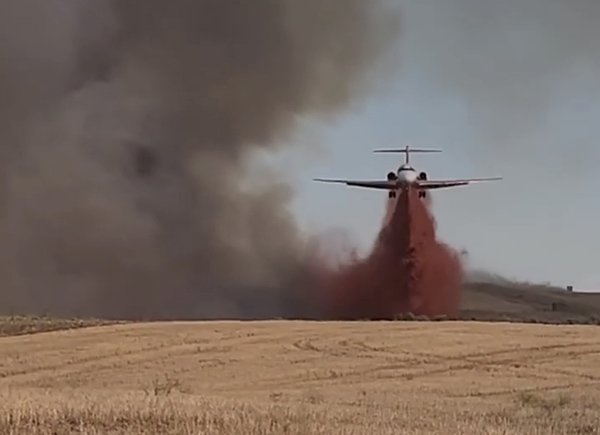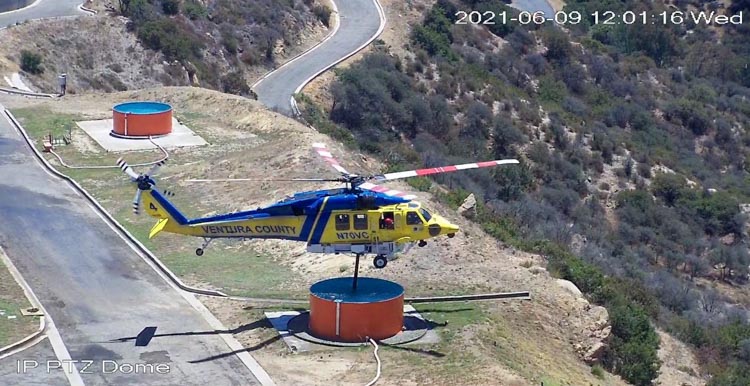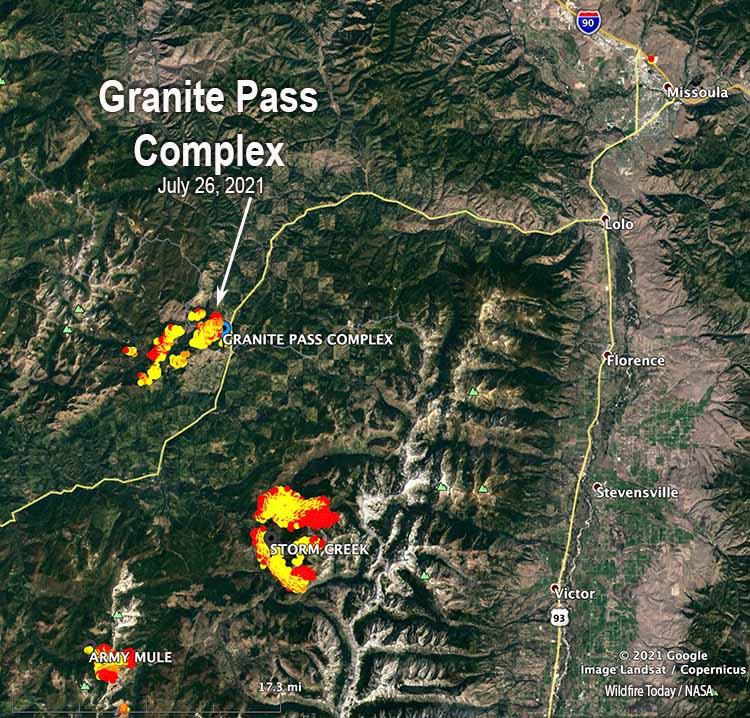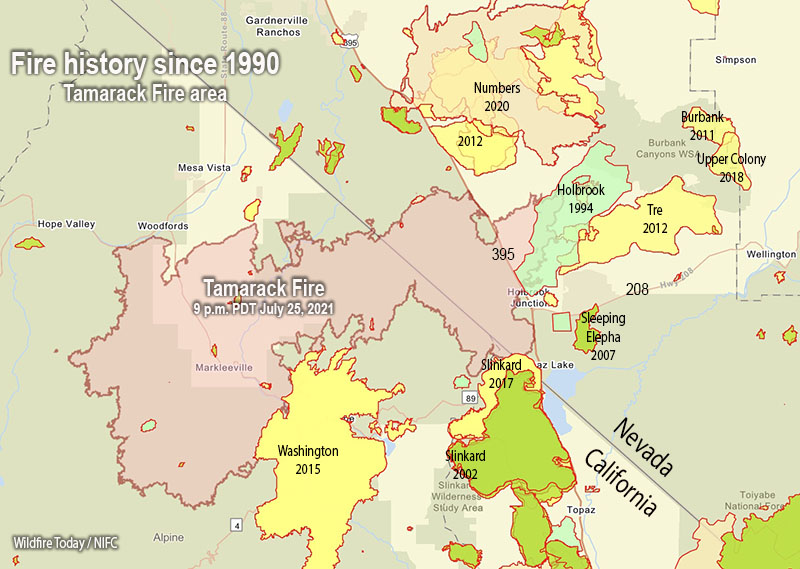
This article was first published at Fire Aviation.
More than 21,000 personnel are battling 66 large wildfires in the early portion of an extremely busy fire season and the US Forest Service (FS) has activated all of the privately owned large air tankers (LATs) that they possibly can. There are no more available in the country.
The FS is the federal agency responsible for contracting for the large fire-slowing aircraft that can carry 3,000 to 4,000 gallons of retardant, or in the case of the DC-10’s, up to 9,400. The FS does not operate any government-owned air tankers; they are all privately owned, working under contracts administered by the FS.
As this is written on July 28, there are 18 LATs active on Exclusive Use (EU) contracts and 5 on Call When Needed (CWN) contracts, for a total of 23. In addition, the FS has borrowed the only LAT that Australia has, a 737, which flew across the Pacific a few days ago.
Five military C-130 Modular Airborne FireFighting Systems (MAFFS) have been called into action that can carry up to 3,000 gallons of fire retardant. Theoretically there should be eight available at all times during the fire season, but we were unable to find out from the FS if it would be possible to activate the additional three.
Some of us who follow the industry and aerial firefighting may or may not be surprised that the FS could only muster 23 LATs on EU or CWN contracts, because for years the agency has told the public and Congressional Committees that they have “up to 35 (or 34)” air tankers.
On May 17, 2021 Fire Aviation was told by a spokesperson for the FS that this year they would have 34 LATs if needed — 18 on Exclusive Use Contracts guaranteed to work, 8 “surge” LATs guaranteed to work for a shorter period of time, and another 8 on Call When Needed (CWN) contracts. Of those 16 surge and CWN aircraft, only 5 could be produced.
In a Senate Committee hearing on June 9, 2020 John Phipps, US Forest Service Deputy Chief for State and Private Forestry said, “We have up to 35 large air tankers (LATs)… and we are well under way for our planning and preparedness for the upcoming western fire season.”
On December 5, 2019 the FS said they had signed Call When Needed (CWN) agreements for air tanker services with six companies for a total of 35 aircraft. The number “35” was misleading because most if not all of the 13 large air tankers on exclusive use (EU) contracts at the time also had CWN contracts; some were being double-counted. That brought the CWN number down to around 22.
It turns out that leaning on that “up to” 34 or 35 number year after year has been a very weak crutch. “Up to 35” can mean any number between zero and 35. It should not be that difficult to count these huge aircraft, especially considering how much they cost to operate.
Some of the Western states have either realized that they can’t count on the federal government to supply them with air tankers when the need arises, or they have recently adopted a more aggressive approach to attacking new fires. Three states this year have leased a total of five LATs that are inspected and carded by the FS, capable of working on EU or CWN contracts for the FS if they had been offered the opportunity. California has augmented their fleet of 23 S-2T’s with two BAe-146’s and one MD-87, Colorado has hired one BAe-146, and Oregon is leasing an MD-87. In addition, the state of Washington has picked up on contract one LAT that had been working on an Alaska contract, a Q-400 operated by Conair. As far as I know the Canadian-converted Q-400 has not been blessed by the Interagency Air Tanker Board in the US, but the state organizations are not bound by that organization. There are also a handful of 1,600-gallon scoopers (CL-415 type) working for states, and too many 700-gallon single engine air tankers to count.
“Three [aircraft that have Forest Service CWN contracts] are operating in Canada,” said Stanton Florea, a Fire Communications Specialist for the FS. “Seven are not operational. They were either not built as airtankers, the companies cannot staff them, or the companies are not making them available to be on contract.”
There is a possibility, Mr. Florea said, that Canada could loan the US some air tankers or scoopers if they were available, through an agreement between the US National Interagency Fire Center and the Canadian Forest Fire Centre. However, the provinces of British Columbia, Manitoba, and Ontario have their hands full with their own fires — they are flying in firefighters from Australia to provide assistance.
CWN aircraft may or may not be immediately available during the fire season, with mechanics and crew members available to suddenly drop what they were doing and start flying fires. In 2017 the average daily rate for large federal CWN air tankers was 54 percent higher than aircraft on exclusive use contracts. But CWN costs are charged to the virtually unlimited fire suppression accounts, so the Forest Service does not care about using taxpayer’s dollars in that manner. And they are not held accountable.
While these numbers may have changed since 2018, it is unlikely that the differential between EU and CWN has changed much.
Over the last 10 years the average number of LATs on EU Forest Service contracts was 14.0 for the United States. The average number on EU contracts from 2000 through 2009 was 28.3. This year there are 18, which is 5 more than last year.
The FS goes as far as they can with the limited, insufficient funds appropriated by Congress and approved by the President. If the planes don’t exist when needed, new and emerging wildfires can more easily escape initial attack and grow into huge blazes, or megafires that can consume more than a million dollars of taxpayer funds each day. In the 14 days the Dixie Fire has been burning homes and hundreds of thousands of acres in Northern California, it has also been eating an average of $4.5 million in suppression funds every day. If some of that was instead spent on prescribed burning and additional EU air tankers, it might save money in the long run.
One of the lessons learned this year and others like it, is, Congress must appropriate adequate funds for the five land management agencies to pay firefighters a living wage, conduct more prescribed fires, and have at least 40 large air tankers and 50 large Type 1 helicopters on exclusive use 10-year contracts instead of 1-year contracts.
The peak of the Western US wildfire season is usually in August, but in 2020 the day with the highest number of fire personnel mobilized was September 19 when the record was set with 32,727 assigned to wildfires.
The outlook for August, September, and October predicts weather that will be hotter and drier than average for the Western US, which, if accurate, will lead to an above average fire season in the Western US. The live fuel moistures and Energy Release Components in many areas are already near or above the all time extremes.










